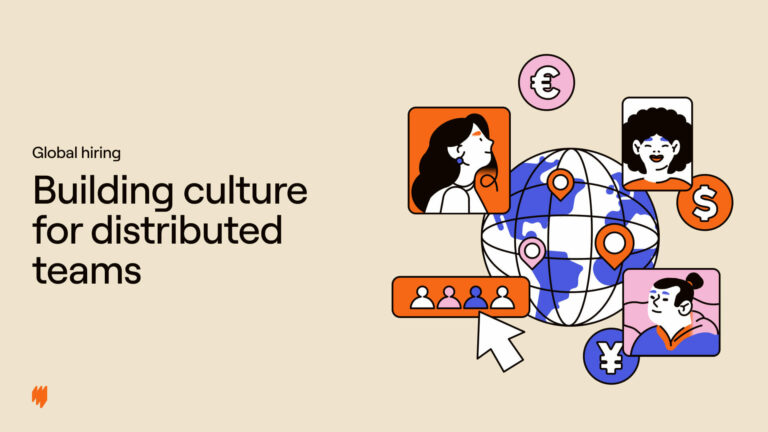Technology has had and will continue to have an immense impact on the way we work. At a time when the world is on lockdown, many companies have turned to alternative solutions to help cut costs and streamline operations. Just one of the many advantages of today’s modern technology is our ability to work remotely.
Because technology allows us to remain connected without establishing a physical presence, remote work and distributed teams have risen to the forefront of the job market and the human resources space. Benefits such as savings on office costs, work flexibility, and access to top global talent cited are just some of the reasons many have turned to hiring international talent from around the world. One of the countries sought after by overseas employers is Singapore.
In this article we’ll be covering everything you need to know about employing talent from Singapore, including the hiring process, local labor law requirements, and more. Check out the FAQs below:
1. Why do people hire remote talent from Singapore?
One of the main reasons employers seek out remote employees from Singapore is the locals’ high English proficiency. The country has an English Proficiency Index (EPI) score of 66.82, making it the highest ranked Southeast Asian country in the index. Globally, Singapore ranked fifth overall as one of the top non-native English speaking countries after European countries like the Netherlands, Sweden, Norway, and Denmark.
Another reason why Singapore is a top choice for employers is its highly educated labor force. A report by the Ministry of Manpower (MOM) in Singapore titled Labour Force in Singapore 2019 showed that six in ten (58%) employees were tertiary-educated.
The younger generations who have had greater access to higher education have started to enter the workforce, with the older generations progressively retiring. This has resulted in a more educated profile for the overall labor force, rising by 14% in ten years.
Employers who are looking for highly educated English speakers tend to look at Singapore as their top choice for remote employees.
2. Where do I look for remote talent in Singapore?
As the smallest country in Southeast Asia, most employers do not generally have to hire remote employees from specific regions. Since a majority of the labor force are highly educated English speakers, hiring by region isn’t necessary. However, getting graduates from the following top universities in the country is also a plus:
- National University of Singapore
- Nanyang Technological University
- Singapore Management University
- Singapore University of Technology and Design
- Singapore University of Social Sciences
Another way to hire talent is to post listings on popular job sites and portals or hire through a trusted recruitment agency. In Singapore, the most popular jobs portals and recruitment agencies are:
3. What is the average salary of a Singapore remote employee?
As of January 2021, the average salary of a Singapore remote employee is SGD 5,783 (USD 4,350). However, the average salary will depend on the nature of the employee’s job. Here’s an approximation of the average monthly salary for seven different positions:
| Job Title | Average Monthly Salary Range (SGD) | Average Monthly Salary Range (USD) |
| Management Accounting Manager | 7,500-10,000 | 5,641-7,521 |
| Management Accounting Analyst/Associate | 4,167-7,500 | 3,134-5,641 |
| Sales Manager | 8,333-11,666 | 6,268-8,775 |
| Marketing Manager | 8,333-11,666 | 6,268-8,775 |
| Developer | 7,083-15,000 | 5,327-11,282 |
| Product Owner | 10,000-16,667 | 7,521-12,536 |
| Data Scientist | 8,333-16,667 | 6,268-12,536 |
Most Singaporean employees will expect an increase of around 5-15% when moving jobs. For tech professionals staying in a role, 46% expect a 0-6% annual salary increment, 38% expect a 7-15% annual salary increment, while 16% expect a 15%+ annual salary increment.
But let’s put some more context into the average salary figures. A 2017/2018 report on the Household Expenditure Survey done by the Department of Statistics in Singapore, shows the following data:
| Average Size | Average Monthly Household Income (SGD) | Average Monthly Household Income (USD) |
| 1 | $5,422 | $4,078 |
| 2 | $8,352 | $6,282 |
| 3 | $10,755 | $8,090 |
| 4 | $14,261 | $10,727 |
| 5 | $17,247 | $12,973 |
| 6 or more | $21,083 | $15,858 |
| Quintiles | Average Monthly Household Income (SGD) | Average Monthly Household Income (USD) |
| 1st-20th | $2,235 | $1,681 |
| 21st-40th | $5,981 | $4,499 |
| 41st-60th | $9,678 | $7,280 |
| 61st-80th | $14,407 | $10,837 |
| 81st-100th | $26,587 | $19,998 |
The lowest 20% of households earn a combined income of $2,235 per month, with the top 20% of households in Singapore are earning a combined income of $26,587 per month. When the report was first published, the average monthly household income was at $11,777 per month – slightly higher than the 3rd quintile.
4. What are the computations for income tax in Singapore?
| Annual Net Taxable Income (SGD) | Tax Rate |
| Less than 20,000 | 0% |
| 20,000-30,000 | 2% |
| 30,000-40,000 | 3.5% |
| 40,000-80,000 | 7% |
| 80,000-120,000 | 11.5% |
| 120,000-160,000 | 15% |
| 160,000-200,000 | 18% |
| 200,000-240,000 | 19% |
| 240,000-280,000 | 19.5% |
| 280,000-320,000 | 20% |
| More than 320,000 | 22% |
Singapore follows a progressive income tax model. For more information about income tax, you can visit this website here.
While freelancing is quickly becoming a growing career trend in Singapore, one risk of hiring freelancers or independent contractors is their compliance with local tax laws. Without a local registered company withholding income tax for them, freelancers may fail or forget to pay their income tax. (See the other risks of hiring an independent contractor.)
You can help your Singapore employee comply with local taxation laws by using Professional Employer Organizations (PEOs) like Multiplier who will take care of payroll and taxes for you.
5. What are the working hours in Singapore?
Singapore labor laws state that regular working hours cannot exceed 44 hours a week or 9 hours a day for a five-day work week. If employees are working a six-day work week, regular working hours cannot exceed 44 hours a week or 8 hours a day.
The Singapore Employee Act also states that employees are prohibited from working for more than 12 hours in any one day unless:
- There is an accident or threat of accident
- Their work is essential to the life of the community, national defense, or security
- Urgent work must be done to machinery or plants
- There is an interruption of work that was impossible to foresee
Employees in Singapore are not allowed to do overtime work exceeding 72 hours a month. Overtime pay is calculated as 150% of the hourly basic pay of the employee, with a cap at $13.50 per hour. This must be paid to the employee within 14 days of the overtime work. This is applicable to the following employees:
- Non-workman (white collar worker) earning up to $2600
- Workman (blue collar worker) earning up to $4500
The same employee act also states that employees cannot be required to work more than six consecutive hours without rest. Employees are also entitled to one full rest day per week. The calculation for pay while working on a rest day is as follows:
| Work Hours | Pay at the Employer’s Request | Pay at the Employee’s Request |
| Up to half of the normal daily working hours | 1 day salary | 0.5 day salary |
| More than half of the normal daily working hours | 2 day salary | 1 day salary |
| Beyond normal daily working hours | 2 day salary + overtime pay | 1 day salary + overtime pay |
6. What benefits am I required by law to provide a Singapore employee?
13th month pay
Unlike countries such as the Philippines or Indonesia, a 13th month pay cycle is not mandatory in Singapore. This is usually written in the contract as an Annual Wage Supplement (AWS). If it is not written in the contract, Singapore employees will know not to expect a 13th month bonus.
Annual Leaves
The number of paid annual leaves – exclusive of public holidays – a Singapore employee has, is dependent on how long the employee has been employed by the employer.
| Years of Employment | Number of Annual Leaves |
| 1 | 7 |
| 2 | 8 |
| 3 | 9 |
| 4 | 10 |
| 5 | 11 |
| 6 | 12 |
| 7 | 13 |
| More than 7 | 14 |
Take note that the above regulations only apply to employees who have worked for their employer for at least one year. If an employee has worked for less than one year but more than three months, his or her annual leave is prorated.
While this is the mandatory number according to the local government, many employers choose to provide their employees – even those who have been employed for a year – between 14-20 annual leaves.
Sick Leaves
Like annual leaves, sick leaves in Singapore are dependent on how long the employee has been employed by the employer.
| Months of Service Completed | Paid Outpatient Sick Leave (Certified Unfit for work) | Paid Hospitalization Leave |
| 0-3 months | 5 | 15 |
| 4th month | 8 | 30 |
| 5 month | 11 | 45 |
| 6 months and more | 14 | 60 |
The employee must inform the employer within 48 hours of inability to work and must provide a medical certificate upon return.
Family Leaves
Maternity Leave
Under the Child Development Co-Savings Act (CDCA), paid maternity leave is provided to female employees who have been employed for more than 3 months prior to giving birth, as long as the child is a Singaporean citizen. While on maternity leave, the employer is not permitted to terminate the employment.
The duration of maternity leave for Singapore employees will depend on the child’s citizenship:
| Child’s Citizenship | Leave Duration |
| Singaporean citizen (1st and 2nd child) | 8 weeks (paid by employer) + 8 weeks (paid by government) |
| Singaporean citizen (3rd child onwards) | 16 weeks (paid by government) |
| Non-Singaporean citizen | 8 weeks (paid by employer) + 4 weeks (unpaid) |
Paternity Leave
A male employee who is expecting a child is entitled to take 14 days of paid leave so long as he meets the following criteria:
- The child is a Singaporean citizen
- The father has or was legally married to the mother between conception and birth of the child
- The father has been employed for more than 3 months prior to the birth of the child
If the child was adopted, the 14-day paternity leave still applies so long as the following criteria is met:
- The child is a Singaporean citizen
- The child is less than 12 months old
- The father has been employed for more than 3 months prior to the adoption date
Childcare Leave
Singaporean employees are also entitled to a maximum of 6 childcare leaves annually. This leave can be given regardless of the employee’s marital status, so long as the following criteria is met:
- The child is a Singaporean citizen or will become a Singaporean citizen within the year
- The child is below seven years old
- The employee has been employed by the employer/company for more than 3 months
Insurance and social security
- Central Provident Fund (CPF): In Singapore, there is no social security scheme. However, every employer in Singapore is required to make contributions to the Central Provident Fund (CPF). All Singaporean citizens and permanent residents must be members of the CPF, while foreign nationals cannot be included in the fund. CPF contributions are dependent on the employee’s age and salary above $750. The wages to which the contribution rates apply are currently subject to a monthly ceiling of $6,000 and an annual ceiling of $102,000.
- Skills Development Levy (SDL): This is a tax Singaporean employers must pay in order to help upgrade the skills of the workforce. The Singapore government also matches the contributions of the employer to the SDL fund. It is also used for employee training and development purposes.
- Worker’s Injury Compensation Insurance: This insurance is mandatory for all Singapore employees, with the exception of domestic workers and persons employed in the Singapore Armed Forces, the Singapore Police Force, the Singapore Civil Defence Force, the Central Narcotics Bureau, and the Singapore Prisons Services. According to the Workers Injury Compensation Act (WICA), an employer must compensate an employee if their employee sustains an injury by accident due to his or her work.
- Community Contribution: This is a contribution to self-help group (SHGs) funds and SHARE donations. The self-help groups work to uplift the less privileged and low income households in the Chinese, Eurasian, Muslim, and Indian communities. SHARE or Social Help and Assistance Raised by Employees is a monthly giving programme of Community Chest, the fund-raising and engagement arm of the National Council of Social Service. Contributions and donations to SHGs and SHARE are voluntary, with 100% of the donations channelled directly to support their critical social service programs.
Type of Tax: 1
- CPF Contribution (Pension)55 and below
Employer Contribution (%): 17% ; Employee Contribution (%): 20% ; Total Contribution (%): 37% - Above 55 to 60
Employer Contribution (%): 13% ; Employee Contribution (%): 13% ; Total Contribution (%): 26% - Above 60 to 65
Employer Contribution (%): 9% ; Employee Contribution (%): 7.5% ; Total Contribution (%): 16.5% - Above 65
Employer Contribution (%): 7.5% ; Employee Contribution (%): 5% ; Total Contribution (%): 12.5%
Notes:
Payable for employees with a monthly salary that is greater or equal to $750The maximum amount of wage charged for CPF is $6,000, and $30,000 on additional wage.
Type of Tax: 2
- Skills Development Levy (SDL)
Employer Contribution (%): $2 or 0.25% ; Employee Contribution (%): 0% ; Total Contribution (%): Varies
Notes:
The higher employer contribution is chosen, this is capped at $11.25
Type of Tax: 3
- Worker’s Injury Compensation Insurance
Employer Contribution (%): 2% ; Employee Contribution (%): 0% ; Total Contribution (%): 2%
Notes:
This insurance applies to the following:
- All employees doing manual work, regardless of their salary level
- All employees doing non-manual work, earning a salary of $2,100 or less a month, excluding any overtime payment, bonus payment, annual wage supplement, productivity incentive payment, and any allowance
Type of Tax: 4
- Community Contribution
Employer Contribution (%): 0% ; Employee Contribution (%): $0.50 – $30.00 ; Total Contribution (%): Varies
Notes:
This insurance applies to the following:
- All employees doing manual work, regardless of their salary level
- All employees doing non-manual work, earning a salary of $2,100 or less a month, excluding any overtime payment, bonus payment, annual wage supplement, productivity incentive payment, and any allowance
7. What other benefits or allowances can Singapore remote employees be given?
While not mandated by law, it is quite common to provide non-taxable allowances for your remote employees, and it’s expected by the employees. These can include stipends for business and equipment expenses, internet and telecom allowances, and even transportation allowance – if your remote employee works from a co-working space. If you work with a PEO platform like Multiplier, they can arrange for other benefits and allowances for your Singaporean employees for you.
It is also quite common in Singapore to reward employees through contractual or discretionary bonuses. There is no law or statutory guidelines when it comes to what kind of bonuses can be awarded. The practice of giving bonuses, while common, also varies per sector, with employers determining how this will be implemented.
Other allowable, non-taxable benefits for Singaporean employees include:
- Food and beverages catered for employees
- Gifts that cost no more than $200 – exclusive of GST
8. What are the regulations on working during the holidays in Singapore?
Currently, Singapore has a total of 11 public holidays. If a public holiday falls on a non-working day, the employee should either receive a day’s salary in lieu of the holiday or an extra day off. If the holiday falls on a rest day, the upcoming workday will be a paid public holiday. If you require your Singaporean employee to work on a public holiday, refer to the table under FAQ #5 to calculate payment. For an updated list of Singaporean holidays, click here.
9. How do I hire a remote employee in Singapore?
If your business is registered in another country, the easiest way to hire a Singaporean remote employee would be through a Professional Employer Organization. PEO platforms like Multiplier make it easy for you to hire remote employees, comply with local labor laws, and pay your employees in time. Instead of having to jump through the legal and financial hoops of setting up a business entity in another country, Multiplier will act as your representative and abide by all the necessary laws for you.
Check out our recent article to know more details on how to hire and set up your remote team,
10. Are probation periods necessary?
While not mandatory, it is common practice in Singapore to arrange a probation period when hiring new employees. Probation periods are agreed upon by both the employer and employee and are usually written up in a probationary contract. This must include the rights and responsibilities of both parties during this period.
The duration of the probation period can range from 3-6 months. However, regular employee entitlements such as annual leave will legally be applicable after three months of service regardless of whether the employee is on probation or not.
11. How do I pay a Singaporean remote employee?
Singapore follows a monthly payment cycle, within 7 days of the end of the salary period. The easiest way to pay your Singaporean remote employees would be through PEO platforms like Multiplier. With a PEO platform, you won’t have to worry about payroll or compliance with local taxes and labor laws as they will be taking care of everything for you.
12. Can Singaporean remote employees be paid in foreign currencies?
As a general rule, salaries paid to Singaporean employees must be paid in Singapore Dollars
(SGD). This can be quite troublesome for foreign nationals looking to hire Singaporean remote employees, which is why using PEO platforms like Multiplier can be extremely advantageous. Multiplier can help set up a contract, enable regular payment cycles in the local currency, and ensure labor law and taxation compliance for you.
By paying your Singaporean remote employees in their local currency, you’ll be able to avoid fluctuations in conversion rates, which will help make tax calculations and contributions to benefits such as healthcare and social security easier.
13. How do I terminate a Singaporean remote employee?
The Employment Act sets very basic rights and guidelines regarding the termination of Singaporean employees. covered under the Employment Act. Usually, the employment contract can serve as the main reference for termination. Both the employer and employee generally are free to agree upon a set notice period. However, the following guidelines from the Employment Act will still apply:
- The length of the notice period must be the same for the employer and the employee.
- If the employment contract does not provide for a notice period, the employer must adhere to the minimum notice periods stipulated in the Employment Act. The minimum notice periods depend on the employee’s length of service as is seen below:
| Length of Service in Company | Notice Period |
| Less than 26 weeks | 1 day |
| 26 weeks to 2 years | 1 week |
| 2 to 5 years | 2 weeks |
| More than 5 years | 4 weeks |
- Either party can terminate the employment immediately by paying to the other party a sum equal to the amount of salary at the gross rate of pay which would have accrued to the employee during the period of the notice.
- Either party can terminate the employment immediately in the event of any willful breach by the other party of a condition of the contract of service.
- If the employment contract does not provide for a notice period, and if the employee is not covered under the Employment Act, the employer must provide reasonable notice of termination.
In the event of a termination of a Singaporean employee, the employee’s salary must be paid:
| Employee resigns and serves the notice period: | On the last day of employment |
| Employee resigns without notice and no notice period is served | Within 7 days of the last day of employment |
| Termination due to misconduct | On the last day of employment, however, if this is not possible, the employee must be paid within 3 business days |
| Employer terminates the employment contract | On the last day of employment, however, if this is not possible, the employee must be paid within 3 business days |
Similar to notice periods, Singapore law does not have any specific statutory requirements with regards to severance payments. The amount given to the employee depends on what is agreed upon in the employment contract or collective agreement when applicable.
Severance payment includes all the salaries and benefits due on the last day of employment. If the employee has been employed for at least 2 years, they are entitled to receive “retrenchment benefits”. In general, retrenchment benefits are usually between 2 weeks to one month for every year the employee has served at the company.
Learn more about how you can easily hire remote employees from Singapore with the help of Multiplier. You can visit our website or contact us today.

Binita Gajjar
Content Marketing Lead
Binita is a Content Marketing Lead at Multiplier





